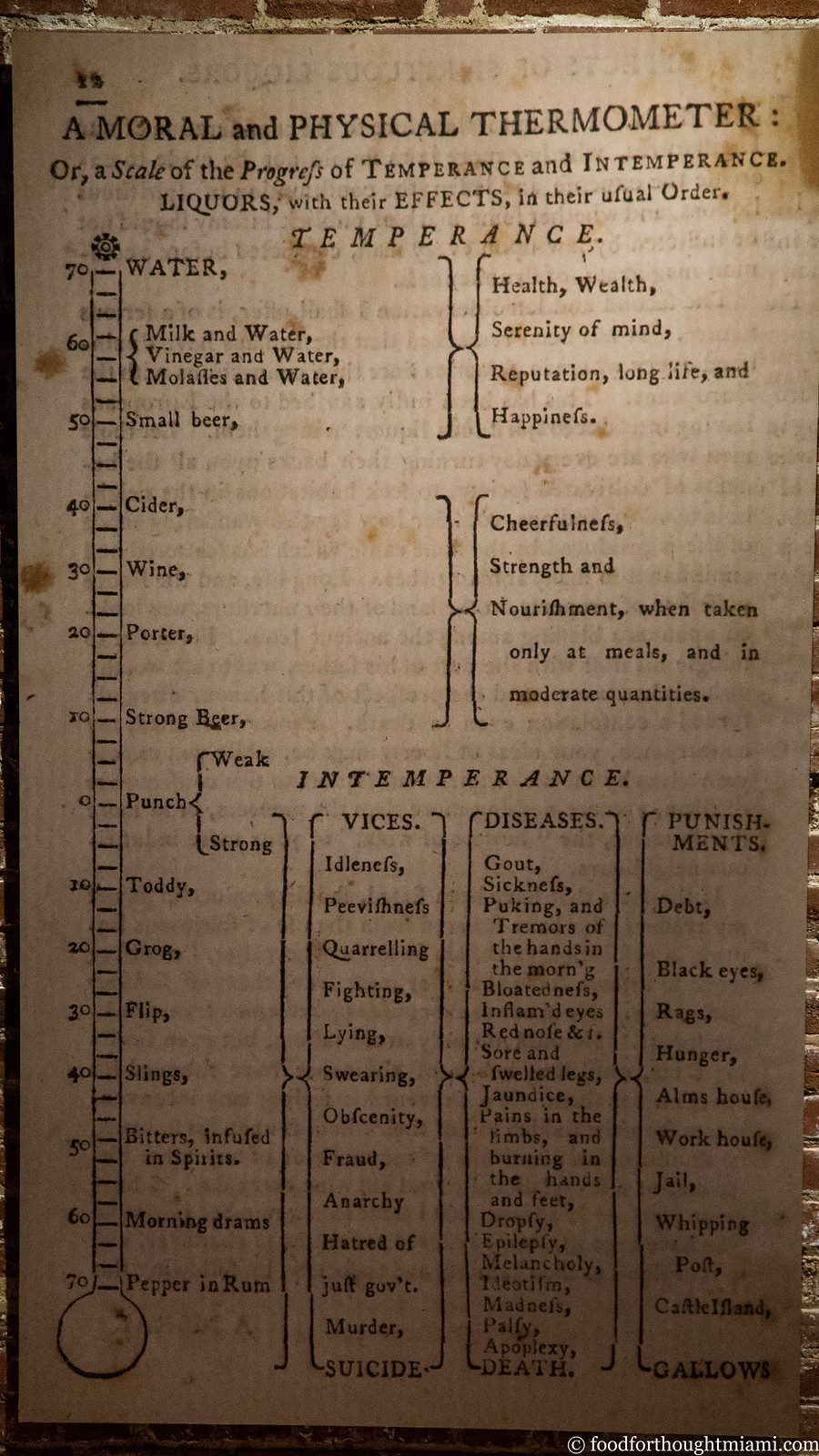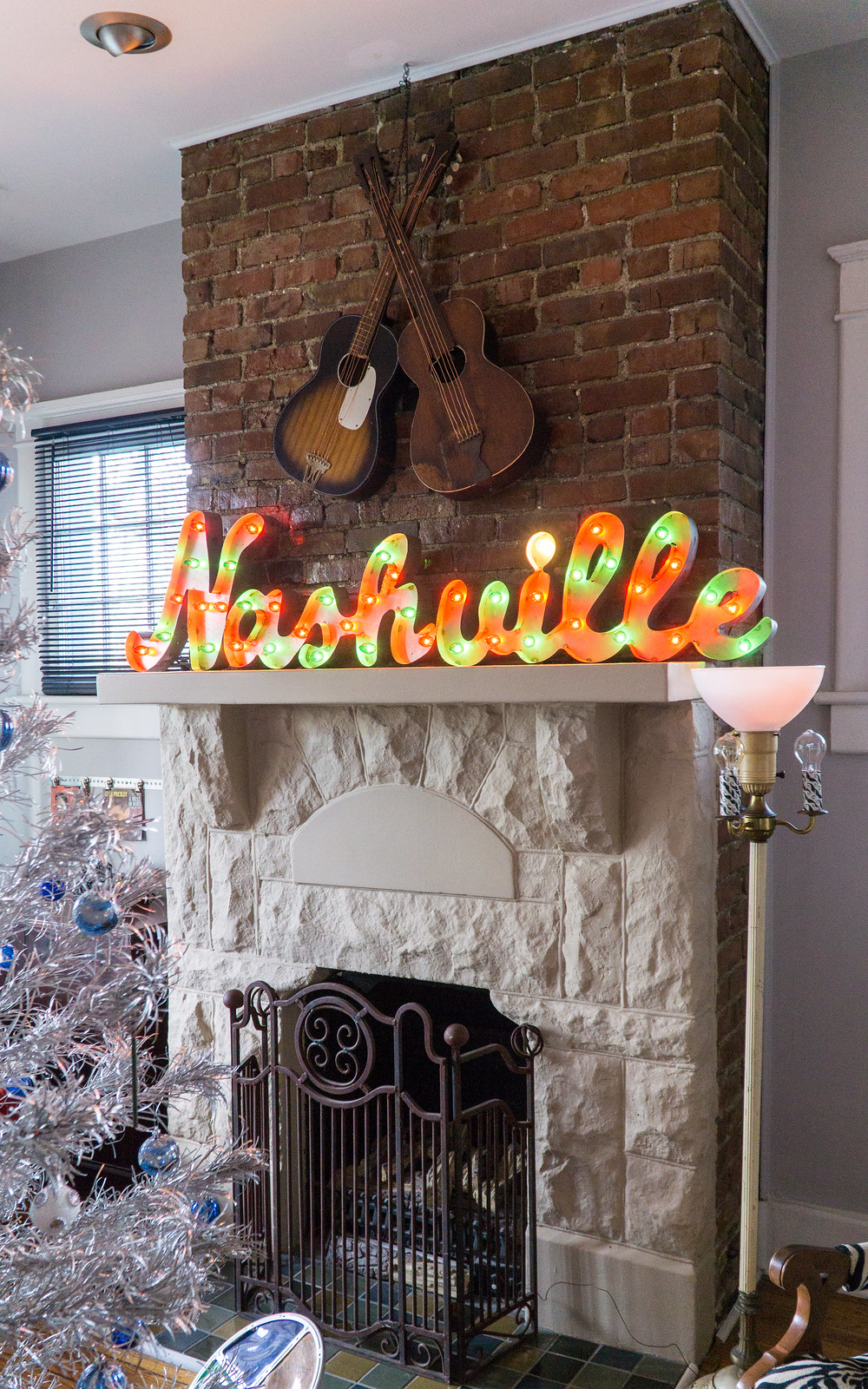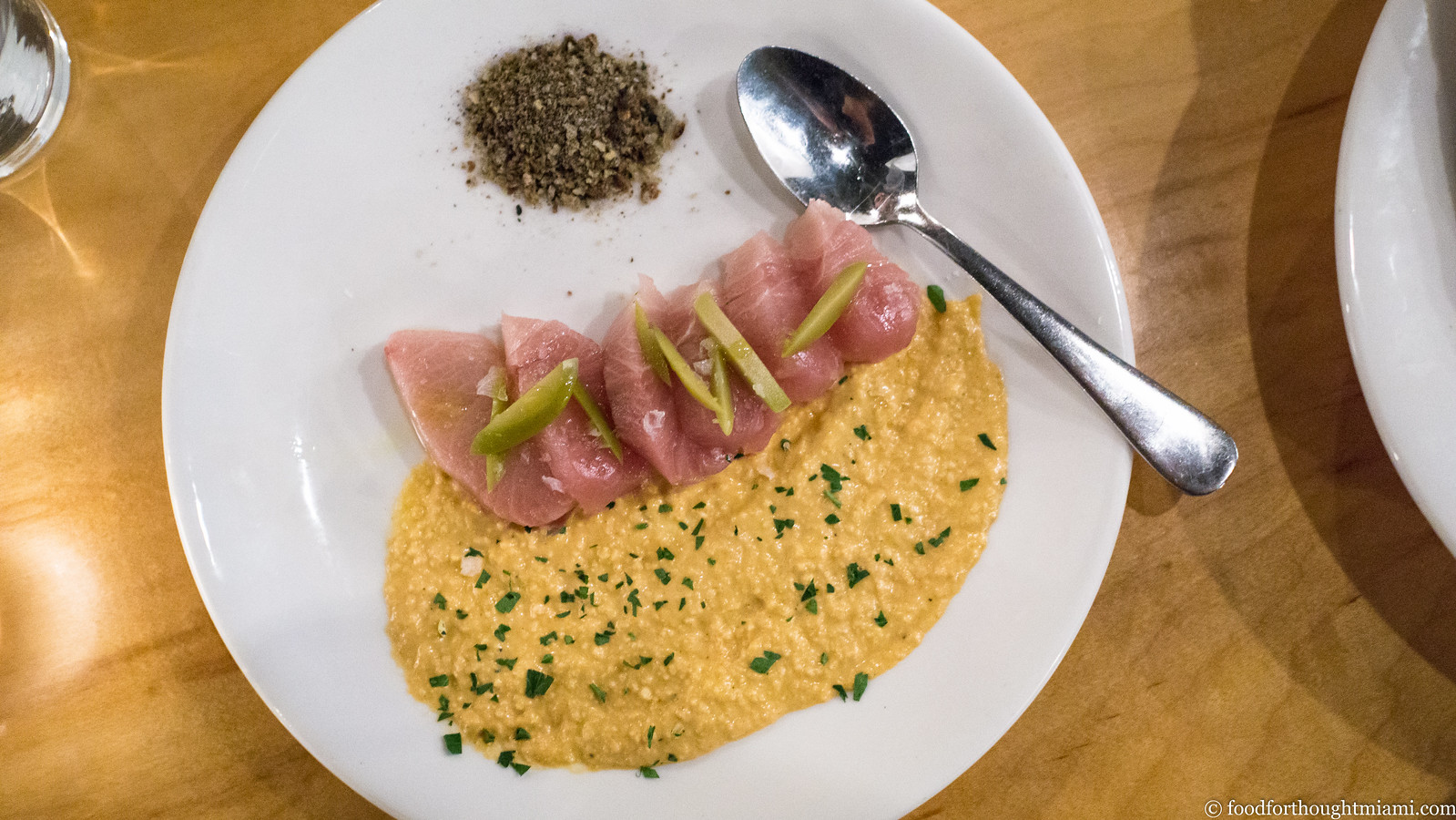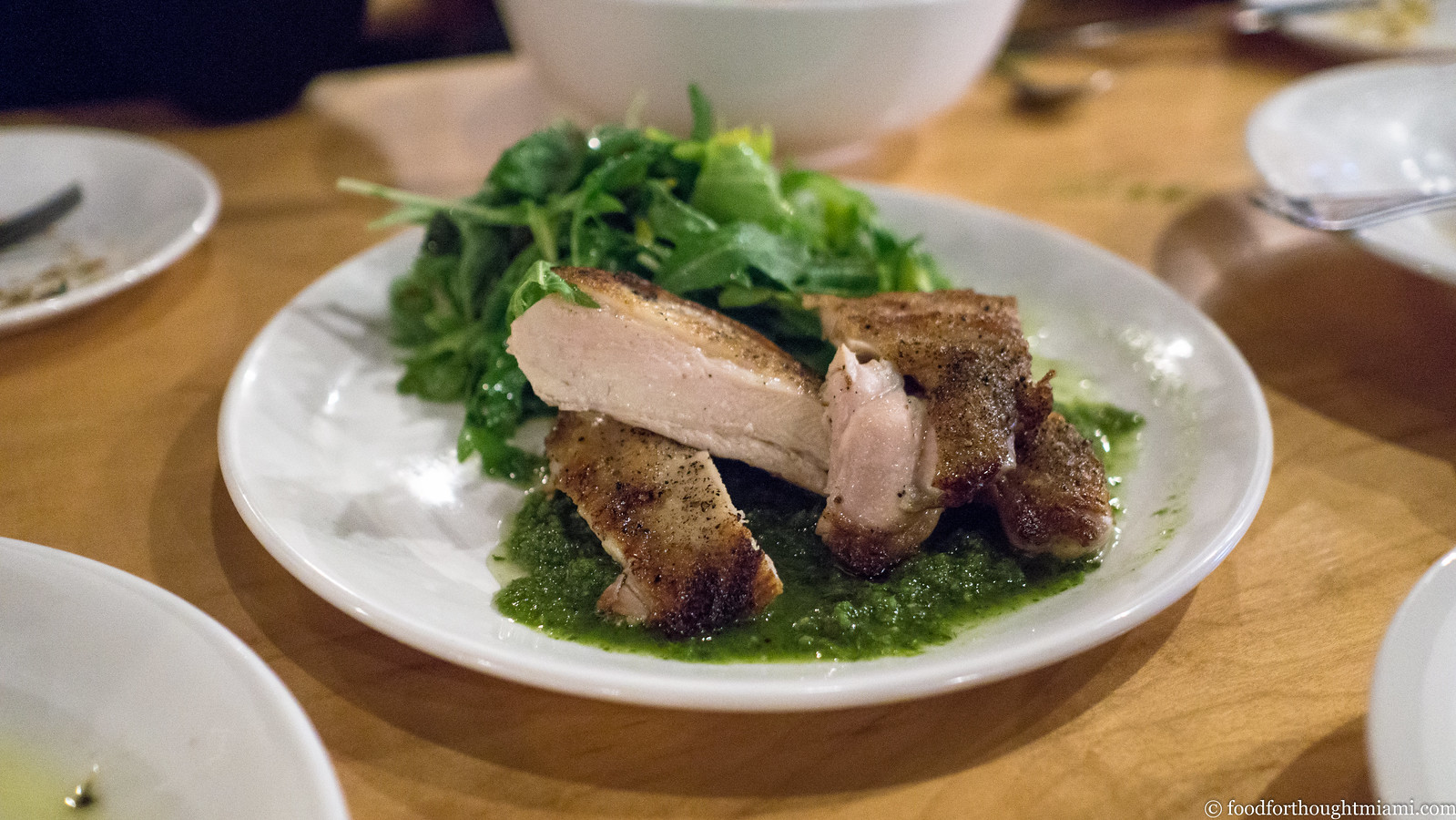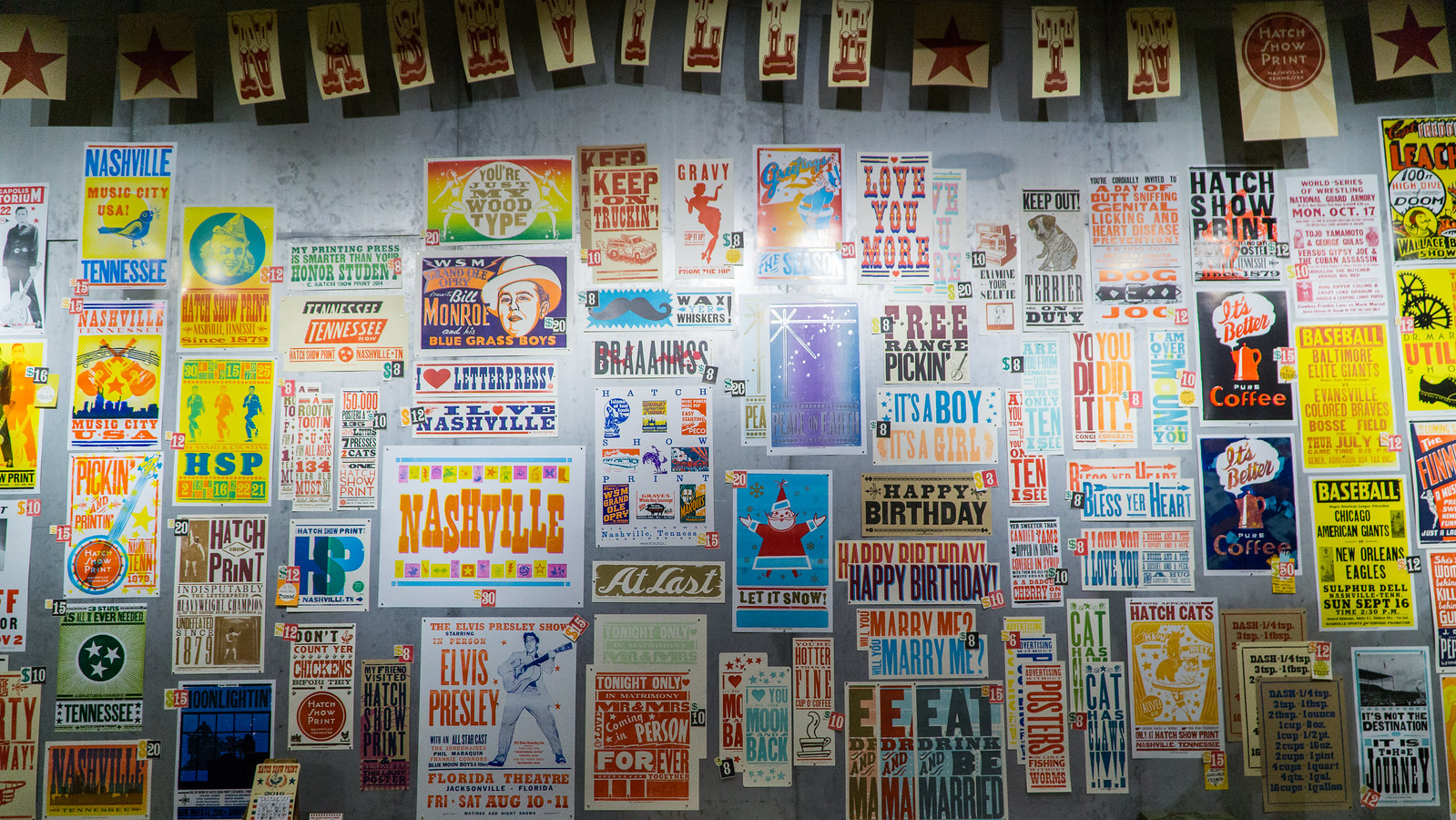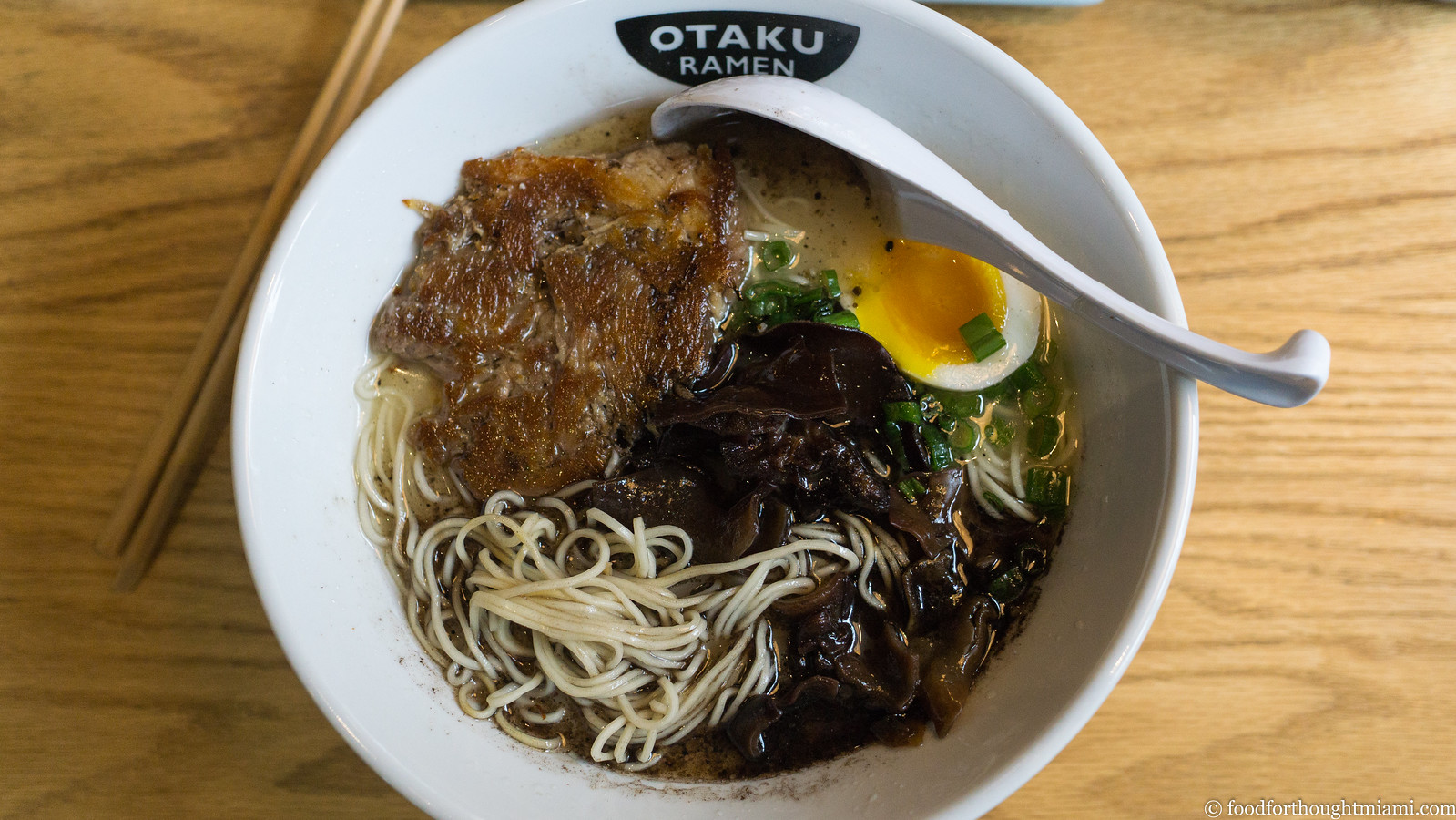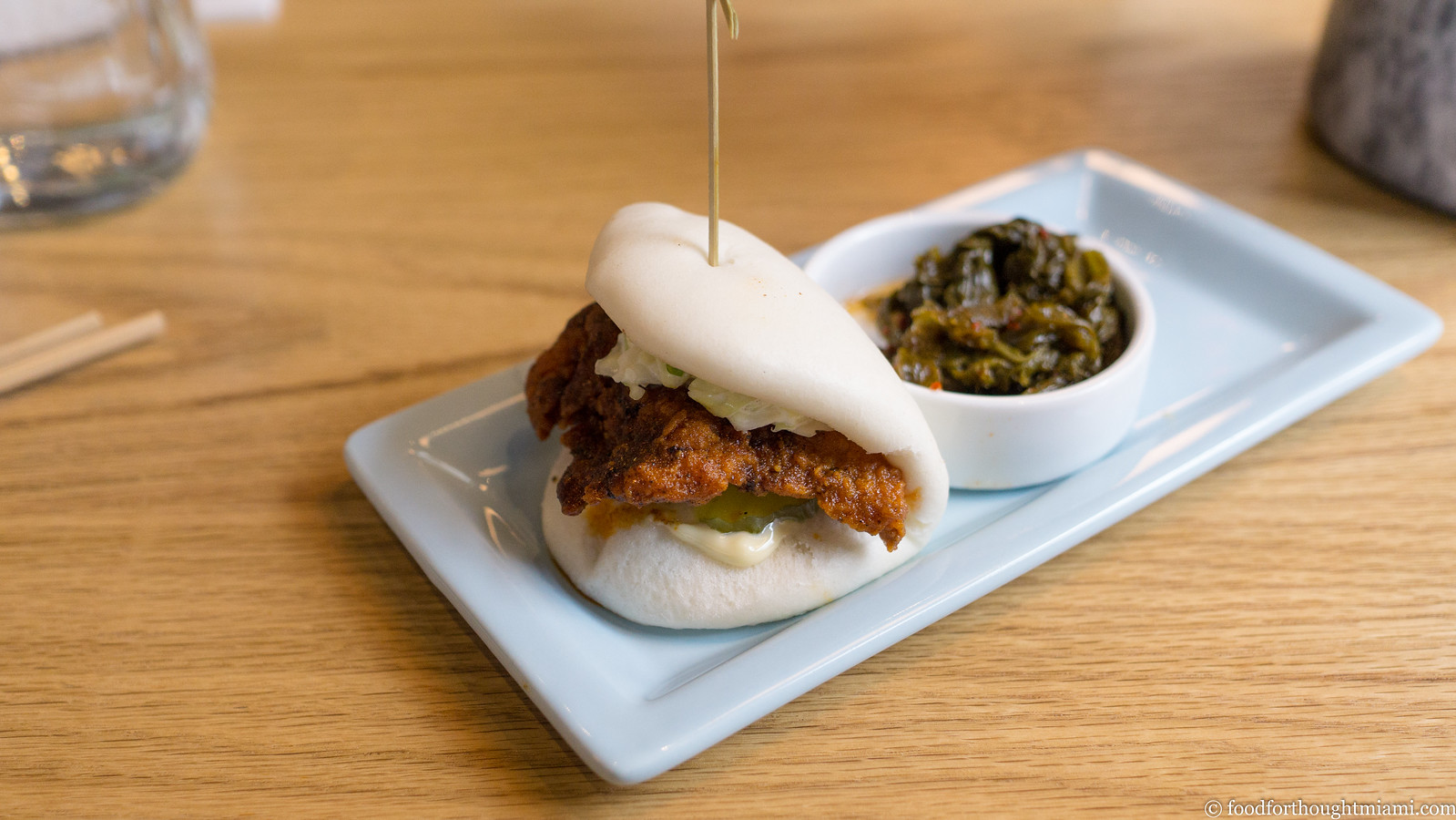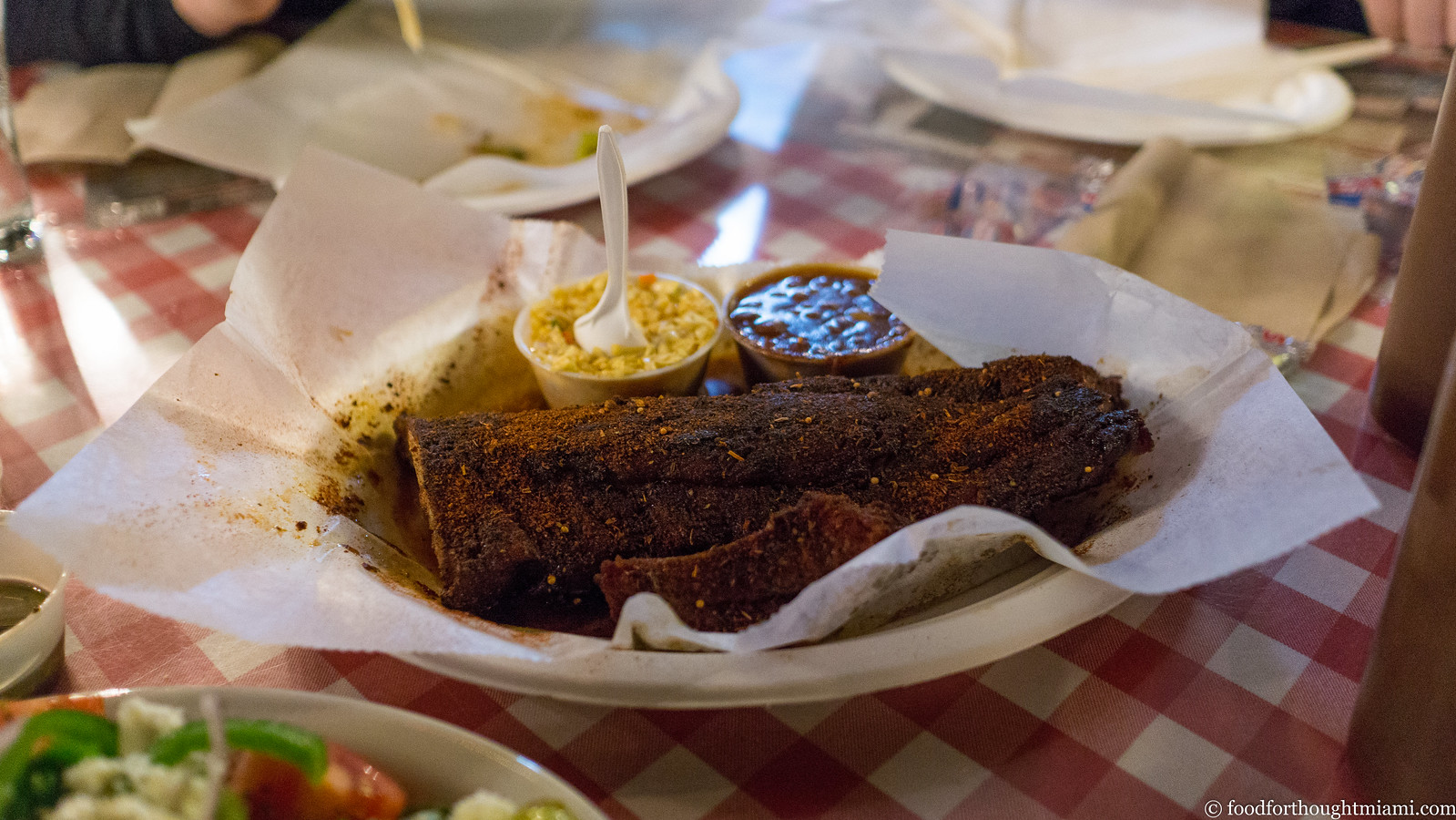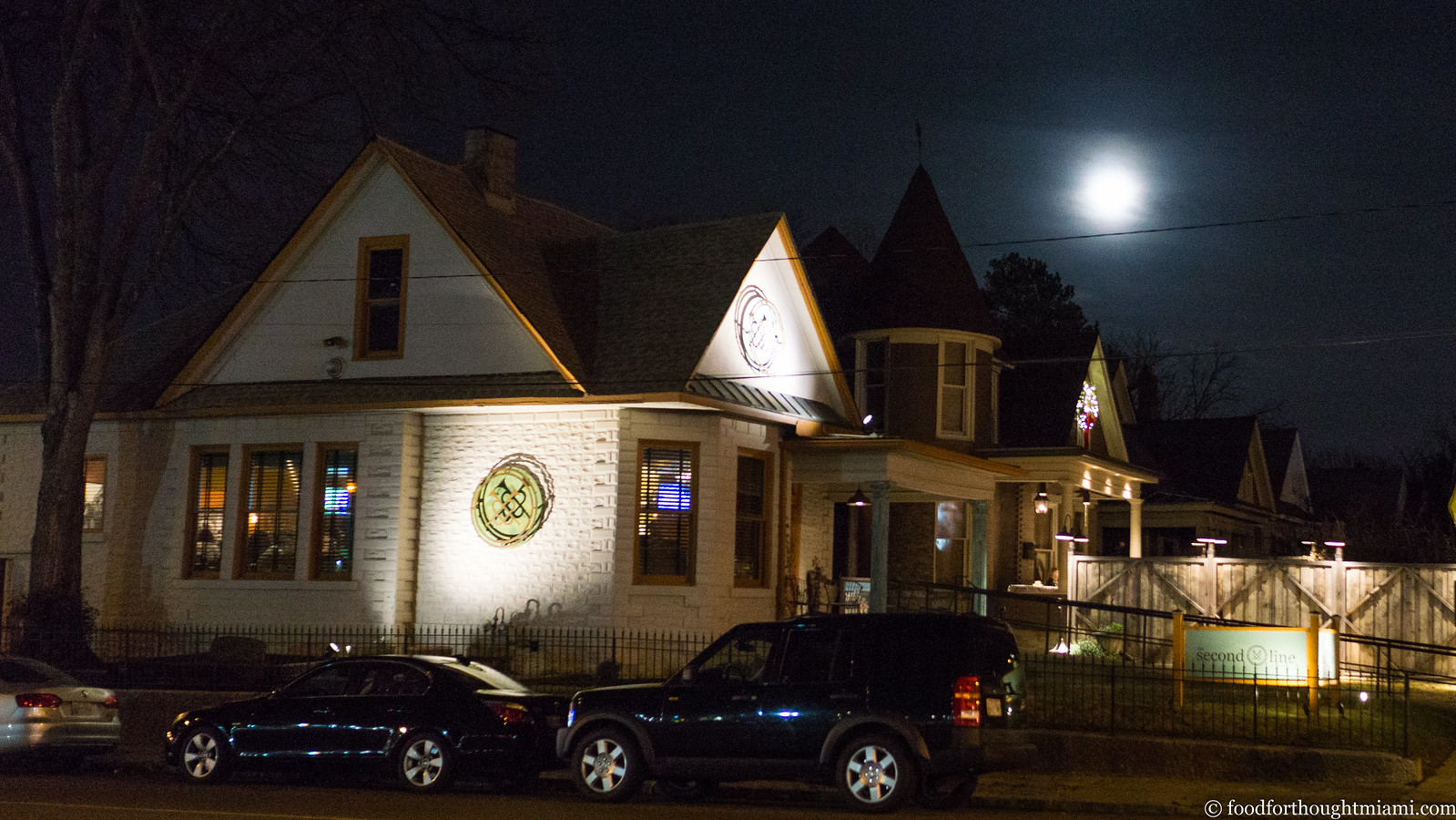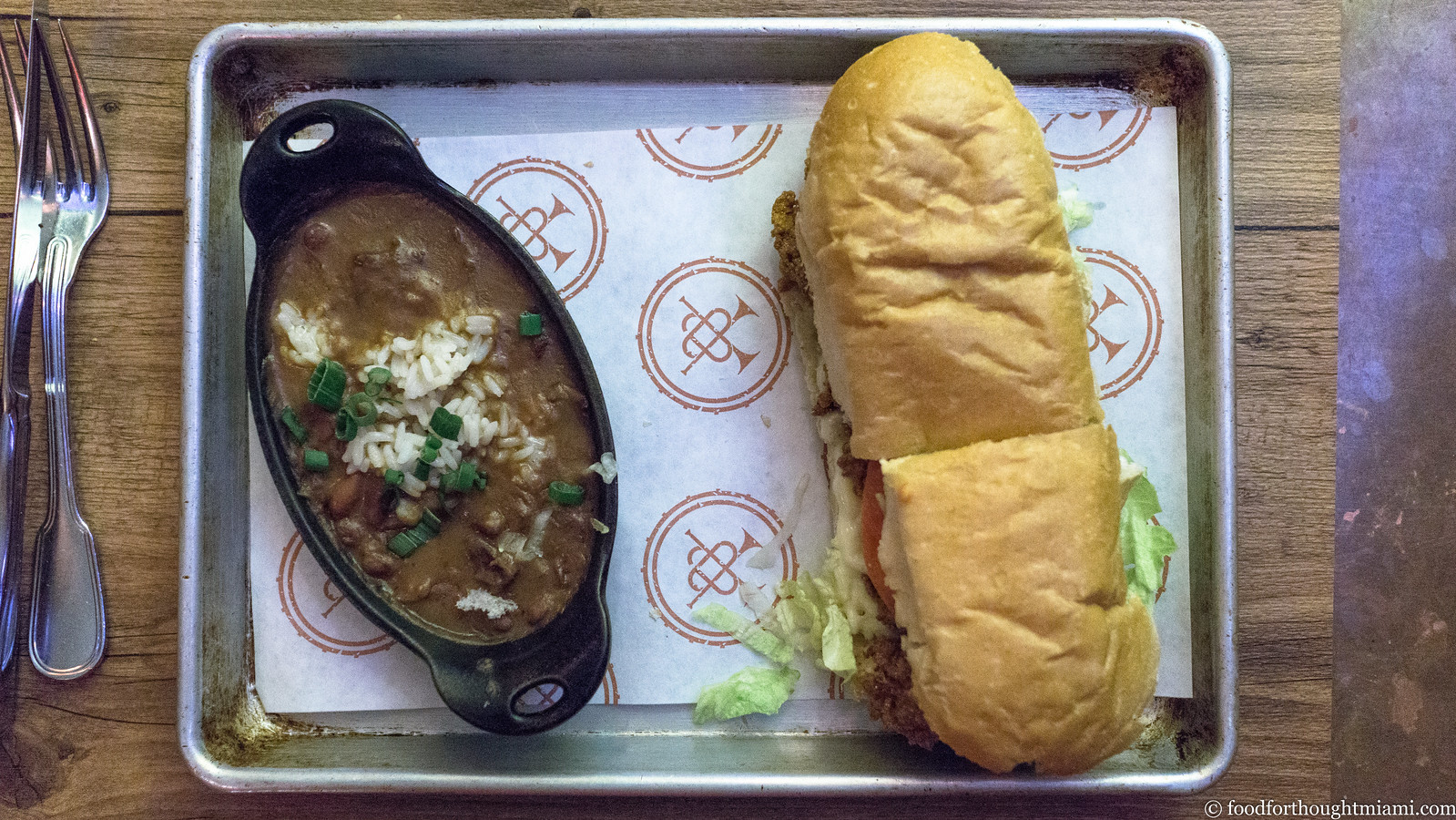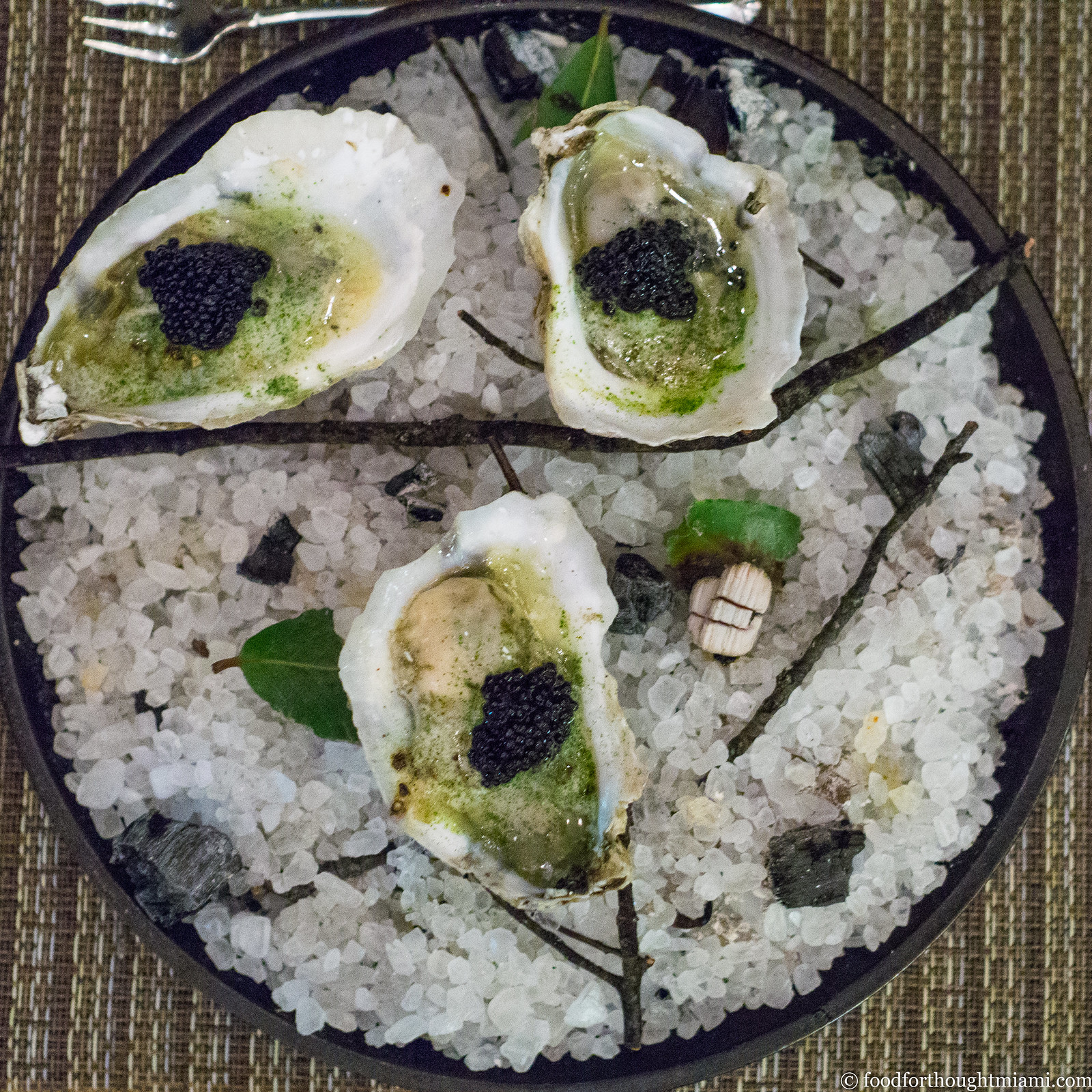We finished 2015 in Nashville, Tennessee. We started 2016 in Louisville, Kentucky. Of our three-stop Southern road trip, Louisville was the only city I'd visited before. In fact I'd been there a few times, but only on work-related matters, and never saw much other than the New Albany, Indiana courthouse (just on the other side of the Ohio River) and my hotel.
That hotel, though, was a pretty special one. The 21c Museum Hotel in Louisville is very possibly one of the greatest places I've ever stayed.[1] Its name is not just a marketing ploy: the basement is a gallery dedicated to 21st century art featuring both rotating exhibitions and selections from the hotel's own collection, and the focus on contemporary art permeates the entire space.
In addition to the gallery downstairs, artworks are incorporated throughout the property. Their signature red penguins (originally a commissioned art work for the 2005 Venice Biennale created by Cracking Art Group) lurk everywhere (and the staff regularly moves them around, so that you may exit your room in the morning and find one staring at you). The area in front of the elevators features an interactive digital video installation called "Text Rain" by Camille Utterback, in which letters cascade down upon a projected silhouette of the people standing in front of it. A chandelier festooned with menacingly pointed manicure scissors hangs in an upper floor common space.
(You can see all my pictures of the hotel in this 21c Museum Hotel flickr set).
The 21c also has a great restaurant – Proof on Main. During my earlier visits, the chef was Levon Wallace – who recently left Louisville to open a Cochon Butcher with Donald Link in our last stop, Nashville. The Proof kitchen has since changed hands a couple times, first to Michael Paley (who recently moved on to Austin, TX to open Central Standard), and now is run by Mike Wajda. Despite all the turnover, it's as strong as ever.
The food at Proof has a southern accent, but not an overwhelmingly strong one: enough that you can tell where it's from. It's also picked up several other curious inflections along the way: Chef Wajda plays around with Korean, Caribbean, even North African flavors, but the patois somehow feels natural, not contrived.
These "roasted bones" are a good example. It seems like 90% of the bone marrow dishes I see on restaurant menus simply recite the Fergus Henderson liturgy of parsley salad and coarse salt. Here, instead, Wajda brushes the bones with an XO butter, then plates them with an assortment of pungent house-made kimchis. There's a subtle nod back Fergus' way with a light salad dressed in a sesame miso vinaigrette, but also a bunch of strong, assertive flavors to play against the sticky richness of the marrow. It was an outstanding dish.
(All my pictures from the restaurant are in this Proof On Main flickr set).
Other appetizers are equally creative, like a sweet potato pop-tart with a chicken liver pâté "frosting" and a sprinkle of crispy cracklings, which was a hit even among the non-offal fans at the table. Even the more traditional stuff, like a smoked catfish dip or the house-made charcuterie, is well done and tasty.
I'm accustomed to a fall-off from the appetizers to the mains, but that wasn't the case at Proof. In fact, even a potentially nebbish dish like a stuffed chicken was done exceptionally well. This hen roulade (the bird came from Marksbury Farm in Lancaster, Kentucky) was one of the best iterations I've ever had: flavorful, juicy chicken, crisp skin, a savory smoked pork stuffing, a dappling of jus, some roasted and fresh winter vegetables underneath. The "hog and dumplings" was also great, a Caribbean -Southern hybrid with a brightly jerk-spiced pork sausage ragu topped with big puffy featherweight dumplings that were like oversized gnudi.
Pecan pie can be cloyingly sugary, but Proof's finds a nice balance with a shot of Kentucky bourbon for a bit of an edge, and a scoop of buttermilk gelato for some creamy tang. If that's not sweet enough for you, every dinner finishes with a big pouf of pink cotton candy.
While many hotel restaurants mail it in for breakfast, we ate well in the mornings at Proof too, like their southern take on eggs benedict with a cornmeal biscuit, country ham and red-eye hollandaise, and an inspired smoked salmon and egg salad sandwich on everything-spice brioche. The bar at Proof also lives up to the name, and stocks one of the broadest – and most fairly priced – bourbon selections I've encountered, some of which can be sampled in themed tastings like the "Bottled In Bond" flight.[2]
Proof On Main
702 West Main Street, Louisville, Kentucky
502.217.6360
The following day featured more bourbon, as we started the morning at the Frazier History Museum down the street. In addition to a nice Lewis and Clark exhibition (I am a sucker for things Lewis and Clark related), there was also an exhibition on Prohibition and Kentucky, sponsored by the (completely impartial) Kentucky Distillers Association. It featured some great pieces of temperance propaganda, like this "Moral and Physical Thermometer" of temperance and intemperance. Clearly, the descent is quick from idleness and peevishness to suicide, death and the gallows. It was also interesting to see the federal prohibition permit issued to Frankfort Distillery, then the producer of Four Roses Bourbon, which allowed it to be one of the few distilleries that could continue selling bourbon for "medicinal" purposes throughout prohibition.
The exhibition makes a pretty compelling argument that prohibition was counter-productive in many ways: it depressed the economy, encouraged excessive illicit drinking, fostered organized crime, and overtaxed the court and penal systems, which spent an overwhelming proportion of their resources dealing with prohibition-related crimes.
All of which just made me want to have a nip of the stuff. Fortunately, we'd made arrangements to do a tour at Willett Distillery in Bardstown that afternoon.
(continued ...)
Showing posts with label southern. Show all posts
Showing posts with label southern. Show all posts
Monday, February 15, 2016
Saturday, February 6, 2016
travelogue: three days of eating (and other things) in Nashville,Tennessee
My first report from our Southern road trip started with three days in and around Memphis, Tennessee. From there we hit the road to visit another city I'd never seen: Nashville. The contrast is striking: while Memphis feels a bit stuck in time, Nashville is booming. The city is experiencing rapid job and population growth, is filled with shiny new public works projects like the massive Music City Center, and the skyline is dotted with as many construction cranes as Miami in the throes of a building craze.
I was amazed to hear from one of our Uber drivers that the East Nashville neighborhood of our (pretty fabulous) AirBnB was, just five years ago, one of the roughest parts of town. You would never know. Now, it's filled with charmingly restored bungalows, third-wave coffee houses, boutique clothiers, a butcher shop, and several restaurants.[1]
After three somewhat BBQ-intensive days in Memphis, we were ready for something different. Happily, a place within walking distance of our home base offered just that: Little Octopus.
The restaurant is the product of husband-and-wife team Sarah and Brad Gavigan, who had previously used the space to run a pop-up called – appropriately enough – POP Nashville. POP was the testing ground for a ramen shop that's now made a permanent move to another location called Otaku Ramen (which we also visited, more below), and also hosted guest dinners with folks like Dominique Crenn (Atelier Crenn), Andy Ricker (Pok Pok) and Ryan Prewitt (Peche). Now it houses Little Octopus, which, coincidentally, is run by a chef with some Miami roots, Daniel Herget.[2]
Little Octopus serves up a long menu of mostly small plates, the overwhelming majority of which are vegetable- and seafood-centric. They are also entirely agnostic as to culinary genre: a Mexican style ceviche spiked with Worcestershire sauce shares space with Mediterranean sardines and a congee that starts in China but ends up who-knows-where, with smoked pumpkin, durian and shiitake mushrooms (it was one of the strangest things I've eaten in a while, but good).
Some highlights: fatty hamachi, block-cut like sashimi, served with a chunky romesco sauce, burnt bread powder and cerignola olives; juicy, crisp-skinned pan-roasted chicken, served over a vibrant salsa verde with a perky herb salad; those sardines, fat and fresh, simply grilled, dusted with bottarga, and drizzled with lemon and olive oil.
While I often seek out local flavor when traveling, not every restaurant needs to bleed the terroir of its immediate surroundings. This was good, fun food, and a welcome change of pace.
(You can see all my pictures in this Little Octopus flickr set).
Little Octopus
604 Gallatin Avenue, Nashville, Tennessee
615.454.3946
The next day we checked out the usual tourist things downtown, including a peek at Ryman Auditorium and taking in a little honky-tonk at Robert's Western World. The highlight for me was Hatch Show Print, a letterpress print shop dating back to 1879, still operating and now situated inside the Country Music Hall of Fame. Lunchtime found us in the Gulch, which everyone talks up as a booming new Nashville neighborhood,[3] and also happens to be where Otaku Ramen recently established a permanent home.
The menu at Otaku is short and sweet: basically, four types of ramen, supplemented by a couple different steamed buns as "snacks" and a few rice bowls. The ramen was quite good. I'd be torn in picking a favorite between the "Tennessee tonkotsu," which featured a hearty, creamy pork bone broth along with confit pork, woodear mushrooms, black garlic oil and a runny egg; the restorative paitan ramen featuring a rich, cloudy chicken stock with chashu and greens; or the more traditional shoyu ramen with a limpid golden-brown chicken and dashi broth base.
For an extra $6, a lunch "set" will get you a bun and an "add-on" to your ramen bowl (i.e., an extra egg, a spice "bomb," or some karashi takana), which is money well spent. The hot chicken bun was pretty much a perfect little snack, the puffy clamshell bun holding a slab of juicy, spicy chicken along with some Kewpie slaw and a couple sweet dill pickles.
(You can see all my pictures in this Otaku Ramen flickr set).
This was an ideal lunch for a cold, blustery Nashville day.
Otaku Ramen
1104 Division Street, Nashville, Tennessee
615.942.8281
(continued ...)
I was amazed to hear from one of our Uber drivers that the East Nashville neighborhood of our (pretty fabulous) AirBnB was, just five years ago, one of the roughest parts of town. You would never know. Now, it's filled with charmingly restored bungalows, third-wave coffee houses, boutique clothiers, a butcher shop, and several restaurants.[1]
After three somewhat BBQ-intensive days in Memphis, we were ready for something different. Happily, a place within walking distance of our home base offered just that: Little Octopus.
The restaurant is the product of husband-and-wife team Sarah and Brad Gavigan, who had previously used the space to run a pop-up called – appropriately enough – POP Nashville. POP was the testing ground for a ramen shop that's now made a permanent move to another location called Otaku Ramen (which we also visited, more below), and also hosted guest dinners with folks like Dominique Crenn (Atelier Crenn), Andy Ricker (Pok Pok) and Ryan Prewitt (Peche). Now it houses Little Octopus, which, coincidentally, is run by a chef with some Miami roots, Daniel Herget.[2]
Little Octopus serves up a long menu of mostly small plates, the overwhelming majority of which are vegetable- and seafood-centric. They are also entirely agnostic as to culinary genre: a Mexican style ceviche spiked with Worcestershire sauce shares space with Mediterranean sardines and a congee that starts in China but ends up who-knows-where, with smoked pumpkin, durian and shiitake mushrooms (it was one of the strangest things I've eaten in a while, but good).
Some highlights: fatty hamachi, block-cut like sashimi, served with a chunky romesco sauce, burnt bread powder and cerignola olives; juicy, crisp-skinned pan-roasted chicken, served over a vibrant salsa verde with a perky herb salad; those sardines, fat and fresh, simply grilled, dusted with bottarga, and drizzled with lemon and olive oil.
While I often seek out local flavor when traveling, not every restaurant needs to bleed the terroir of its immediate surroundings. This was good, fun food, and a welcome change of pace.
(You can see all my pictures in this Little Octopus flickr set).
Little Octopus
604 Gallatin Avenue, Nashville, Tennessee
615.454.3946
The next day we checked out the usual tourist things downtown, including a peek at Ryman Auditorium and taking in a little honky-tonk at Robert's Western World. The highlight for me was Hatch Show Print, a letterpress print shop dating back to 1879, still operating and now situated inside the Country Music Hall of Fame. Lunchtime found us in the Gulch, which everyone talks up as a booming new Nashville neighborhood,[3] and also happens to be where Otaku Ramen recently established a permanent home.
The menu at Otaku is short and sweet: basically, four types of ramen, supplemented by a couple different steamed buns as "snacks" and a few rice bowls. The ramen was quite good. I'd be torn in picking a favorite between the "Tennessee tonkotsu," which featured a hearty, creamy pork bone broth along with confit pork, woodear mushrooms, black garlic oil and a runny egg; the restorative paitan ramen featuring a rich, cloudy chicken stock with chashu and greens; or the more traditional shoyu ramen with a limpid golden-brown chicken and dashi broth base.
For an extra $6, a lunch "set" will get you a bun and an "add-on" to your ramen bowl (i.e., an extra egg, a spice "bomb," or some karashi takana), which is money well spent. The hot chicken bun was pretty much a perfect little snack, the puffy clamshell bun holding a slab of juicy, spicy chicken along with some Kewpie slaw and a couple sweet dill pickles.
(You can see all my pictures in this Otaku Ramen flickr set).
This was an ideal lunch for a cold, blustery Nashville day.
Otaku Ramen
1104 Division Street, Nashville, Tennessee
615.942.8281
(continued ...)
Tuesday, January 19, 2016
travelogue: three days of eating (and other things) in and around Memphis, Tennessee
Despite getting to do my fair share of traveling, there are still huge swaths of this country I've never seen. With all of the family together over winter break, I aimed to make a small dent in the long list of "Places I Haven't Been" with a week-long, three-city trek that started in Memphis, Tennessee. As always, my pre-trip research resulted in a list of places to visit about five times longer than could possibly be achieved in the time we had. To see the complete list and plot your own adventure, click on this Memphis / Nashville / Louisville google map. Here's where we ate, with a few inedible highlights along the way.
If I knew one thing about Memphis food before this trip, it was dry-rub ribs. And if I knew one place to get them, it was Charles Vergos' Rendezvous, a nearly 70-year old restaurant downtown where you enter through a back alley and head downstairs into the basement. The ribs here are swabbed with a vinegar and spice mop, cooked over hot charcoal, then dusted with a heavy shower of dried spices. Except for a small puddle of the meat's own juices, there's not touched by any sauce, though there are a couple squeeze bottles on the table. These are not your fall-off-the-bone kind of ribs; they've still got some traction, matching the assertive flavors of pork and spice.
It's not your typical barbecue (in fact some might say it's not barbecue at all), and the place has a little bit of a tourist trap feel to it, but I've had plenty worse ribs than these. I was also fond of their slaw, which had a pronounced yellow mustard kick, and am grateful to Allison Riley for counseling me not to miss the simple pleasures of a sausage and cheese appetizer plate.
(You can see all my pictures in this Charles Vergos' Rendezvous flickr set).
Charles Vergos' Rendezvous
52 S. Second Street, Memphis, Tennessee
901.523.2746
Our first night in Memphis found us at The Second Line, a New Orleans inspired restaurant from Chef Kelly English. The Louisiana-born chef first started cooking professionally in New Orleans with culinary godfather John Besh, then made his way to Memphis to open his first spot, Restaurant Iris, in 2009. A few years later he opened The Second Line, a more casual place featuring lots of Big Easy staples, right next door to the fancier Iris.[1]
What better way to start an evening than a sazerac? Followed by some New Orleans-style BBQ shrimp (with a shout-out to English's mentor: "Besh's BBQ Shrimp") and a nice loaf of French bread? All that was missing was, alas, my favorite part: the shrimp's heads. When I'd order these at Mr. B's Bistro in New Orleans or Red Light in Miami, I'd give Mrs. F all the meat and just suck on all the heads.[2]
English's fried gulf oyster poboy, dressed with lettuce tomato mayo and pickles, was as good as any I've had in New Orleans (seen up close in cross-section here), with a hearty sidecar of red beans and rice. And while much of the menu consists of several other varieties of poboys, there's also a good beet and feta shwarma, and even a "reasonably healthy dinner salad" if you had ribs for lunch and don't see a fried oyster sandwich as an exercise in moderation.
For our first night in town, this hit all the right spots.
(You can see all my pictures in this The Second Line flickr set).
The Second Line
2144 Monroe Avenue, Memphis, Tennessee
901.590.2829
Much like eating dry-rub ribs, you can't go to Memphis and not go to Beale Street. This three-block stretch, with a history as an entertainment district stretching back to the 1800's, feels a bit like a low-budget Bourbon Street. It has its share of kitsch, but it also has its share of charm. I couldn't figure out why I was hearing an extra horn line over the recorded music coming from one of the bars until I spied a wandering trumpeter playing as he walked down the sidewalk.[3] And a troupe of street gymnasts used Beale as the stage for an impressively athletic series of flips, culminating in this high air in front of the 140-year old A. Schwab Trading Co. store.
(continued ...)
If I knew one thing about Memphis food before this trip, it was dry-rub ribs. And if I knew one place to get them, it was Charles Vergos' Rendezvous, a nearly 70-year old restaurant downtown where you enter through a back alley and head downstairs into the basement. The ribs here are swabbed with a vinegar and spice mop, cooked over hot charcoal, then dusted with a heavy shower of dried spices. Except for a small puddle of the meat's own juices, there's not touched by any sauce, though there are a couple squeeze bottles on the table. These are not your fall-off-the-bone kind of ribs; they've still got some traction, matching the assertive flavors of pork and spice.
It's not your typical barbecue (in fact some might say it's not barbecue at all), and the place has a little bit of a tourist trap feel to it, but I've had plenty worse ribs than these. I was also fond of their slaw, which had a pronounced yellow mustard kick, and am grateful to Allison Riley for counseling me not to miss the simple pleasures of a sausage and cheese appetizer plate.
(You can see all my pictures in this Charles Vergos' Rendezvous flickr set).
Charles Vergos' Rendezvous
52 S. Second Street, Memphis, Tennessee
901.523.2746
Our first night in Memphis found us at The Second Line, a New Orleans inspired restaurant from Chef Kelly English. The Louisiana-born chef first started cooking professionally in New Orleans with culinary godfather John Besh, then made his way to Memphis to open his first spot, Restaurant Iris, in 2009. A few years later he opened The Second Line, a more casual place featuring lots of Big Easy staples, right next door to the fancier Iris.[1]
What better way to start an evening than a sazerac? Followed by some New Orleans-style BBQ shrimp (with a shout-out to English's mentor: "Besh's BBQ Shrimp") and a nice loaf of French bread? All that was missing was, alas, my favorite part: the shrimp's heads. When I'd order these at Mr. B's Bistro in New Orleans or Red Light in Miami, I'd give Mrs. F all the meat and just suck on all the heads.[2]
English's fried gulf oyster poboy, dressed with lettuce tomato mayo and pickles, was as good as any I've had in New Orleans (seen up close in cross-section here), with a hearty sidecar of red beans and rice. And while much of the menu consists of several other varieties of poboys, there's also a good beet and feta shwarma, and even a "reasonably healthy dinner salad" if you had ribs for lunch and don't see a fried oyster sandwich as an exercise in moderation.
For our first night in town, this hit all the right spots.
(You can see all my pictures in this The Second Line flickr set).
The Second Line
2144 Monroe Avenue, Memphis, Tennessee
901.590.2829
Much like eating dry-rub ribs, you can't go to Memphis and not go to Beale Street. This three-block stretch, with a history as an entertainment district stretching back to the 1800's, feels a bit like a low-budget Bourbon Street. It has its share of kitsch, but it also has its share of charm. I couldn't figure out why I was hearing an extra horn line over the recorded music coming from one of the bars until I spied a wandering trumpeter playing as he walked down the sidewalk.[3] And a troupe of street gymnasts used Beale as the stage for an impressively athletic series of flips, culminating in this high air in front of the 140-year old A. Schwab Trading Co. store.
(continued ...)
Sunday, January 17, 2016
best thing i ate last week (dec 28 - jan 3) - oysters at Husk
"Best Thing I Ate Last Week" is still playing some catch-up from our winter break trek through Memphis, Nashville and Louisville, but we're getting there. New Year's Eve 2015 found us in Nashville, and as I was booking reservations for the trip I was pretty happy to find a spot open at Husk. We'd visited Chef Sean Brock's original incarnation of Husk in Charleston, South Carolina almost exactly three years ago (pictures here), and I was excited to try the Nashville version.
Holidays menus at restaurants are usually a bummer and I typically avoid them; but at Husk they did it up right. The three-course menu offered several choices for each, which were not that far afield from the typical restaurant experience. Out of several really good dishes, my favorite were these roasted Rappahannock oysters, swimming in an herbaceous bone marrow butter, and topped with spoonfuls of Tennessee hackleback caviar. A great way to close out 2015.
(You can see all the pictures in this Husk - Nashville NYE flickr set).
Runners-up: slices of Benton's ham brushed with coffee vinegar, and a version of shrimp and grits, both from the same meal at Husk; the Tennessee tonkotsu ramen at Otaku Ramen in Nashville; the fantastic roasted marrow bones with XO butter and kim chi at Louisville's Proof on Main.
Tuesday, March 5, 2013
McCrady's - Charleston, South Carolina
For at least a couple years, I've been building a proposed itinerary for what I call the Grand Southern Dining Tour. At its most elaborate, it would go up Florida's east coast en route to Charleston, South Carolina,[1] keep going to Raleigh, North Carolina,[2] then possibly head further north to Richmond, Virginia[3] before detouring west to Louisville, Kentucky,[4] then work back the long way to South Florida by way of Nashville, Tennessee,[5] Asheville, North Carolina[6] and Atlanta, Georgia.[7]
Of course, that's never going to actually happen. I just don't have the time to devote to such a lengthy dining and driving agenda. But maybe it can be done in bits and pieces. My first step in that direction was a short visit to Charleston before the New Year, and the first reservation I booked was at McCrady's.
If you've paid any attention to the national food media the past few years, it is extremely unlikely that you've not heard of McCrady's and its master of ceremonies, Sean Brock. More than any other chef, he's been the face and voice of the "New South," what Josh Ozersky, with his knack for coining a phrase, dubbed "Lardcore" cooking, bringing modernist sensibilities and techniques to traditional Southern ingredients.
But what makes Brock's cooking so special is not that he understands how to use xanthan gum and liquid nitrogen. It's that he understands how to do something truly special with food: make it tell a story. At McCrady's, and perhaps even more so at his newer restaurant, Husk, he weaves a tale of the South Carolina low-country and the surrounding areas: the history, the traditions, the products of the land and sea.
(You can see all my pictures in this McCrady's flickr set, or click on any picture to enlarge.)
Part of what makes that story so compelling is how deeply Brock has ingrained himself into its telling: he raises his own pigs and cures his own hams. He farms some of the produce that is used in his restaurants. He's a dedicated seed saver who has personally helped preserve heirloom varietals that are part of the South's culinary heritage. He literally has a cornucopia of local products tattooed on his arm. But it would all just be a history lesson but for the fact that Brock's food is also flat out delicious.
We visited both McCrady's and Husk on our four-day Charleston visit. I was glad we did. Though they both bear Brock's indelible imprint, they are different restaurants: Husk somewhat more strictly faithful to the Southern idiom, McCrady's less constrained to the genre.
Here is the tasting menu we had in late December at McCrady's, in a warm, inviting dining room imbued with the glow of a crackling fireplace:
(continued ...)
Of course, that's never going to actually happen. I just don't have the time to devote to such a lengthy dining and driving agenda. But maybe it can be done in bits and pieces. My first step in that direction was a short visit to Charleston before the New Year, and the first reservation I booked was at McCrady's.
If you've paid any attention to the national food media the past few years, it is extremely unlikely that you've not heard of McCrady's and its master of ceremonies, Sean Brock. More than any other chef, he's been the face and voice of the "New South," what Josh Ozersky, with his knack for coining a phrase, dubbed "Lardcore" cooking, bringing modernist sensibilities and techniques to traditional Southern ingredients.
But what makes Brock's cooking so special is not that he understands how to use xanthan gum and liquid nitrogen. It's that he understands how to do something truly special with food: make it tell a story. At McCrady's, and perhaps even more so at his newer restaurant, Husk, he weaves a tale of the South Carolina low-country and the surrounding areas: the history, the traditions, the products of the land and sea.
(You can see all my pictures in this McCrady's flickr set, or click on any picture to enlarge.)
Part of what makes that story so compelling is how deeply Brock has ingrained himself into its telling: he raises his own pigs and cures his own hams. He farms some of the produce that is used in his restaurants. He's a dedicated seed saver who has personally helped preserve heirloom varietals that are part of the South's culinary heritage. He literally has a cornucopia of local products tattooed on his arm. But it would all just be a history lesson but for the fact that Brock's food is also flat out delicious.
We visited both McCrady's and Husk on our four-day Charleston visit. I was glad we did. Though they both bear Brock's indelible imprint, they are different restaurants: Husk somewhat more strictly faithful to the Southern idiom, McCrady's less constrained to the genre.
Here is the tasting menu we had in late December at McCrady's, in a warm, inviting dining room imbued with the glow of a crackling fireplace:
(continued ...)
Tuesday, January 3, 2012
Yardbird Southern Table and Bar - Miami Beach
Geography notwithstanding, Miami really isn't part of "The South." Though Florida as a whole is undoubtedly a Southern state, those who live here know that the South really ends somewhere near Palm Beach County's northern border, and Latin America actually begins in Miami, with Broward and Palm Beach constituting something of a demilitarized zone of transplants from the Northeast.
So when word came out that Chef Jeff McInnis, recently departed from the Momofuku-esque Gigi, was going to be cooking regional Southern fare at a new place on South Beach, it was at least something different from the waves upon waves of burger joints and steakhouses. It seemed a far cry from Gigi's Asian-inspired small plates, but McInnis' work before Gigi at the Ritz Carlton South Beach, more Mediterranean than anything else, wouldn't have exactly suggested pork buns either.
Yardbird Southern Table and Bar opened in October 2011 and clearly was on to something; the place was immediately packed, and the crowds haven't stopped coming. Turns out, the chameleon-like McInnis hails from the Florida Panhandle (according to the map I've laid out above, that definitely is the South) and started his cooking career in Charleston, South Carolina, so maybe the food at Yardbird is actually closer to home than initial appearances would suggest.
(You can see all my pictures in this Yardbird flickr set).
As with Gigi, where McInnis teamed up with experienced restaurateur and club-owner Amir Ben-Zion, Yardbird is a collaboration between the chef and John Kunkel, founder of the rapidly expanding Lime Fresh Mexican Grill chain. They've created a look and feel for the place that is casual and Southern-accented without being entirely hokey: white-washed brick walls and unfinished wood-beamed ceilings, jars of pickled vegetables and blackboard drawings of farm animals as decoration. It's sort of Crate & Barrel meets Cracker Barrel.[1]
The menu likewise plays on traditional tropes of the Southern genre while updating them with some contemporary style. Astute menu deconstructionists will be able to spot several McInnis dishes that got translated from Asian to Southern when he moved restaurants: that short rib meat loaf is a variation on one he did at Gigi; the pepper-spiced watermelon that accompanies the fried chicken used to be a component of a Gigi small plate; there's a fried green tomato BLT that comes from the same family as Gigi's pork belly BLT; the "Sweet Tea-Brined Southern Ribs" bear more than a passing resemblance to what used to be Gigi's "Southern Boy" ribs. Working with flavor profiles that have a more personal connection, the hope is that Yardbird's versions ought to be even better.
(continued ...)
Subscribe to:
Posts (Atom)







